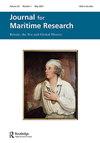商船海员的健康,1860-1960:英国的医药、技术、船主和国家
Q3 Arts and Humanities
引用次数: 1
摘要
牧师(63岁)。约翰·富兰克林爵士在他的最后一次航行中,给那些听到他“宣读教堂礼拜仪式”的人留下了深刻的印象(194)。海军对礼拜仪式的这种依恋可能为牧师制度奠定了基础,布莱克承认,在19世纪后期,牧师制度越来越倾向于Tractarian。至少,它表明航海的虔诚经常表现在非福音派的习语中。尽管如此,布莱克的研究仍因其涉及面广而值得称赞。书中有关罗马天主教徒在海军中的地位以及宗教在极地探险中的地位等晦涩话题的部分颇具启发性。他甚至为广教会的英国国教找到了一席之地。他指出,19世纪60年代,萨默塞特公爵(Duke of Somerset),海军大臣,自由神学著作的作者,为重振海军牧师做出了巨大贡献(137)。布莱克还指出,这一时期在海军历史上的宗教影响一直持续到20世纪,在第二次世界大战的关键时刻有自发祈祷的例子(241-2)。然而,人们不禁要问,“福音主义的主导地位”(x)真的是这一切的根源吗?还是在19世纪海军中有更广泛的新教传统,福音派成语只是其中一种表达方式?需要更多的研究来充分解决这个问题。对于这样的研究路线,布莱克的辛勤工作将构成一个无价的起点。本文章由计算机程序翻译,如有差异,请以英文原文为准。
Merchant seamen’s health, 1860–1960: medicine, technology, shipowners and the state in Britain
a clergyman (63). Sir John Franklin, on his final voyage, impressed those who heard him ‘read the Church service’ (194). Such attachment to liturgy within the Navy may have laid the foundations for a chaplaincy that Blake concedes was increasingly Tractarian in the later nineteenth century. At the very least, it suggests that seafaring piety was frequently manifested in idioms that were not evangelical. Nevertheless, Blake’s study is to be commended for its range. Sections on obscurer topics such as the place of Roman Catholics in the Navy and of religion on polar expeditions are illuminating. He even finds a place for broad church Anglicanism, pointing out that the Duke of Somerset, First Lord of the Admiralty and the author of a work of liberal theology, did much to reinvigorate the naval chaplaincy in the 1860s (137). Blake also suggests that the religious implications of this era in the Navy’s history were evident well into the twentieth century, relating instances of spontaneous prayer at key moments in the Second World War (241–2). Yet one is left wondering, was ‘the predominance of evangelicalism’ (x) really at the root of this? Or was there a wider Protestant tradition within the nineteenth-century Navy, of which ‘the evangelical idiom’ was but one expression? More research is required to address this issue fully. For such a line of enquiry, Blake’s painstaking work will constitute an invaluable starting point.
求助全文
通过发布文献求助,成功后即可免费获取论文全文。
去求助
来源期刊

Journal for Maritime Research
Arts and Humanities-History
自引率
0.00%
发文量
0
期刊介绍:
The Journal for Maritime Research ( JMR ), established by the National Maritime Museum in 1999, focuses on historical enquiry at the intersections of maritime, British and global history. It champions a wide spectrum of innovative research on the maritime past. While the Journal has a particular focus on the British experience, it positions this within broad oceanic and international contexts, encouraging comparative perspectives and interdisciplinary approaches. The journal publishes research essays and reviews around 15-20 new books each year across a broad spectrum of maritime history. All research articles published in this journal undergo rigorous peer review, involving initial editor screening and independent assessment, normally by two anonymous referees.
 求助内容:
求助内容: 应助结果提醒方式:
应助结果提醒方式:


